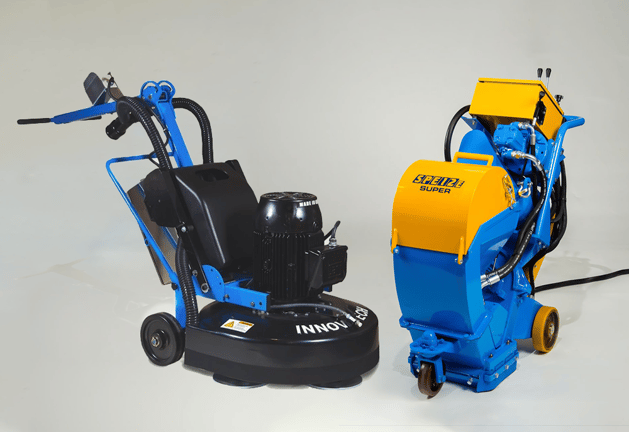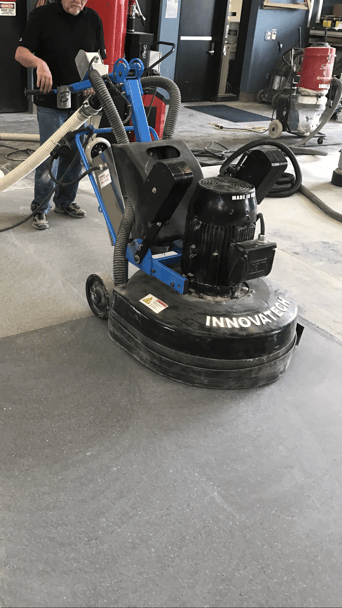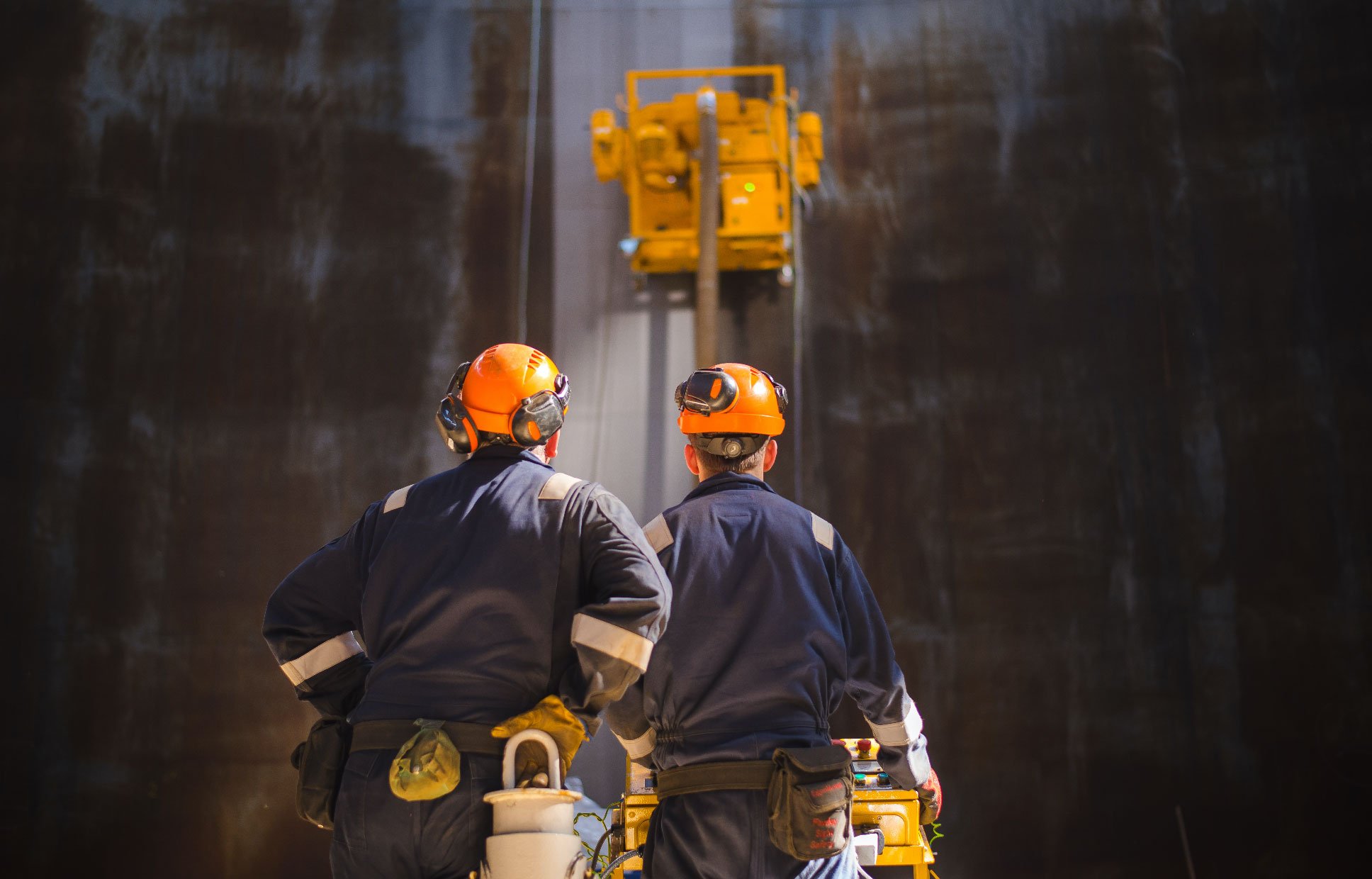
Well, the answer is easy, they are both great! And... this article is finished! 😜
OK - so maybe there still is a a little more of the story to tell...
Of course the answer to that question is not quite as simple as my initial response above. But the honest truth is, both machines are great for profiling concrete. But both methods have positive and negative attributes as well as some limitations to consider. In this blog we will review what they are, and where you would prefer to use one over the other. My hope is, that you as a contractor can make sure you know how to select most appropriate machine for the type projects you are working on.
PROFILING CONCRETE
To start off I think we should quickly discuss what we mean by 'profiling concrete'. That is simply a term that describes the surface texture you apply to smoothly finished concrete in order to get a 'profile' (or texture) that is the appropriate roughness so that you can adhere some kind of a substrate or epoxy or coating to it. In our industry that 'roughness' is measured by a standard called CSP (Concrete Surface Profile). The CSP is a guide that evaluates the coarseness of the profile from smooth - to extremely rough. CSP 1 = lightly etched to CSP10 which is extremely rough.
Now lets look at the two types of machines you could use to achieve this.
DIAMOND PLANETARY GRINDERS
This method of profiling concrete is by far my favorite way to prepare concrete. For many years I was a commercial flooring contractor and I really liked to install my new materials over a freshly ground concrete floor! Whenever I used my planetary grinder to prepare the concrete surface I was always left with a beautiful “blank canvas” that I was ready to work with.
Pros
- Produces a very smooth finish.
- Removes high spots and ridges in the concrete.
- You have a wide selection of diamond grit options to produce a CSP (Concrete Surface Profile) of 1 – 3 and in some cases a CSP of 4 (yes 4!)
- You have the option of grinding wet or dry.
- Planetary diamond grinders are multi use machines, a planetary grinder can also polish the concrete and remove heavy coatings as well.
- Typically, you will use less material when coating over a diamond ground floor as it is smoother and will need less material to cover.
- Diamond grinding does NOT leave “corn rows” like a shot blaster that can be seen “telegraphing” through thin mil epoxies.
- Grinding cuts the concrete instead of impacting the concrete so it does not produce micro-fractures.
- You can get much closer to the walls with a diamond grinder.
Cons
- Typically, grinding is slower than shot blasting.
- Grinding drives the debris and concrete grindings into the surface of the concrete making a “bond breaker” for the material being installed afterwards. So, it is critical that these grindings be completely removed before continuing with your coating application.
- While diamond tooling has come down a lot in recent years, tooling is still expensive.
- Diamond tooling can be a little confusing, matching the correct type of diamond to a specific floor.
- Not all, but many planetary grinders are difficult and expensive to work on.
- Concrete dust MUST be contained correctly with either water or expensive HEPA filter dust extraction systems. (Special vacuums to the layman … LOL)
- All larger machines require a lot of power to run, either 230 or 480 3 phase. Many jobsites will not have that kind of power available, so you need to have a generator onsite. (Added expense)
If you want some more information on diamonds then click here.
INCLOSED SHOT BLAST SYSTEMS
Pros
- High production rate, depending on the hardness of the concrete you can profile concrete much quicker than with a planetary diamond grinder.
- Shot blasters can blast not only concrete but steel as well. Like ship decks and tanks.
- Shot blasting will achieve a higher CSP rate.
- Shot blasting CLEANS the floor. Unlike grinding, there is NO grindings or dust in the surface of the concrete that needs to be removed before coating.
- Economical to operate.
- Some shot blasters have the option to reduce the width of your blast to only remove striping and on steel, weld inspection.
Cons
- Floor surface is NOT smooth and consistent, they will have “corn rows” that will be visible when coating with thin mill coatings.
- While it leaves the floor surface completely free of dust and contaminants you still need to remove stray shot that was not recycled.
- Shot blasting results in micro fractures to the surface of the concrete.
- you must be careful when running a shot blaster (especially a big one) because it is possible to remove too much material and end up damaging the floor, by going to slow or leaving your shot valve open to long in one area.
- You must have the correct, paired, HEPA dust system to not only remove debris but efficiently recycle your shot. To much CFM and your shot will not recycle but get sucked into the extraction system and too little CFM and shot does not rebound correctly resulting g in “dropped shot” and a dangerous buildup of silica containing dust in the environment.
- Staging challenges, the systems for reasonably large projects can get pretty big and can be a challenge to stage.
- Power requirements on larger equipment is often 230 & 480 3 phase. Job sites typically will not have that power and you will need to have the correct generator on site.


Example of corn rows w/ shot blaster vs smooth finish w/ planetary diamond grinder.
To sum things up, (like I said at the beginning of this article) both machines are great for surface profiling.
But!!! If I was going to....
- Apply a high build epoxy (ie: a thick epoxy)
- Install a parking deck membrane
- Install a moisture barrier
- Prepare a floor for a concrete overlay or Terrazzo
I would definitely lean towards a Shot Blaster.
But!!! If I was going to....
- Apply a thin 'mil' coating
- Install VCT, sheet-goods, rubber flooring or even glue-down carpet
- Apply a 'skim-coat' (ie: a very thin layer of compound)
- Polish the concrete
Then, clearly, a planetary Diamond Grinder would be the machine to use.
So there you have it. Hopefully that sheds a little more light on what machine you would choose depending on the project you have.
And... If you still have more questions about surface preparation you can click here


 By
By